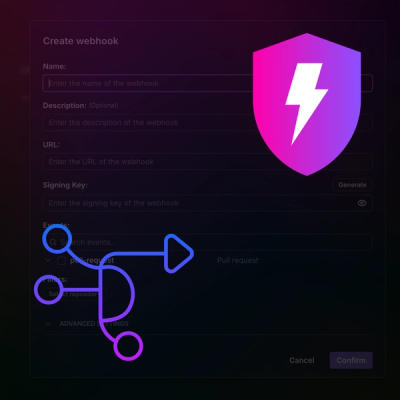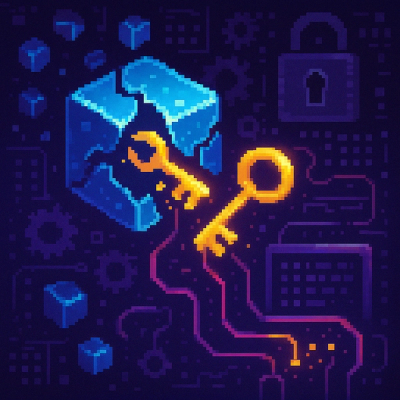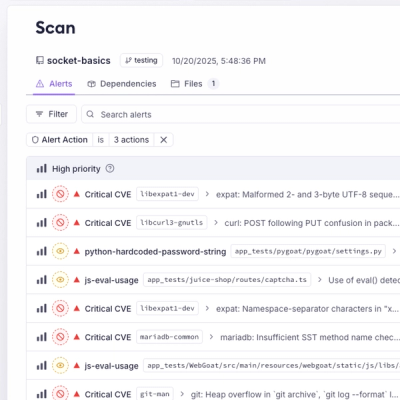
Product
Introducing Webhook Events for Pull Request Scans
Add real-time Socket webhook events to your workflows to automatically receive pull request scan results and security alerts in real time.
@code-dot-org/johnny-five
Advanced tools
Code.org fork of rwaldron/johnny-five: The JavaScript Robotics and Hardware Programming Framework. Use with: Arduino (all models), Electric Imp, Beagle Bone, Intel Galileo & Edison, Linino One, Pinoccio, pcDuino3, Raspberry Pi, Particle/Spark Core & Photo

Artwork by Mike Sgier
This is the Code.org fork of johnny-five. Please check out the main project here!
This project was forked in 2017 to provide better support for the Adafruit Circuit Playground which is used in the Code.org curriculum. The project was updated to the latest release of its upstream in September 2022, and Code.org customizations were then re-implemented.
git clone https://github.com/code-dot-org/johnny-five
cd johnny-five
npm install
This is the most typical use case for @code-dot-org/johnny-five fork development.
Apps (aka Code Studio) is a set of apps which installs and references this package. You can run the dashboard locally from the apps directory using bin/dashboard-server (setup reference)
You can use yarn add for local development and testing.
cd {code-dot-org repo directory}/apps
yarn add <file-path-to-local-folder>
When you are finished testing locally, you can run yarn @code-dot-org/johnny-five to install the npm package instead of the local package.
Note that a copy of the local johnny-five package was added to your node_modules directory so that changes in @code-dot-org/johnny-five are not automatically transferred to @code-dot-org/code-dot-org/apps/node_modules. Thus, you must run yarn add <file-path-to-local-folder> again after any changes in the local johnny-five package.
In addition, there are changes to your package.json and yarn.lock locally that you do not want to commit.
You can lint and test your code (unit tests included in test/) using the grunt command. Remember to add or update unit tests for any new or changed functionality.
There are additional tests in Apps within apps/test/unit/lib/kits/boards/circuitPlayground and apps/test/unit/lib/kits/boards that you can run locally to test any new updates within johnny-five. Refer to testing.md.
If you'd like to make changes to the readme contents, please make them in the tpl/.readme.md file. Then generated the markdown with: grunt examples.
Johnny-Five is an Open Source, Firmata Protocol based, IoT and Robotics programming framework, developed by the Nodebots Community. Johnny-Five programs can be written for Arduino (all models), Electric Imp, Beagle Bone, Intel Galileo & Edison, Linino One, Pinoccio, pcDuino3, Raspberry Pi, Particle/Spark Core & Photon, Tessel 2, TI Launchpad and more!
Johnny-Five has grown from a passion project into a tool for inspiring learning and creativity for people of all ages, backgrounds, and from all across the world.
Just interested in learning and building awesome things? You might want to start with the official Johnny-Five website.
Johnny-Five does not attempt to provide "all the things", but instead focuses on delivering robust, reality tested, highly composable APIs that behave consistently across all supported hardware platforms. Johnny-Five wants to be a baseline control kit for hardware projects, allowing you the freedom to build, grow and experiment with diverse JavaScript libraries of your own choice. Johnny-Five couples comfortably with:
...And that's only a few of the many explorable possibilities. Check out these exciting projects: node-pulsesensor, footballbot-workshop-ui, nodebotui, dublin-disco, node-slot-car-bot, servo-calibrator, node-ardx, nodebot-workshop, phone-home, purple-unicorn, webduino, leapduino, lasercat-workshop, simplesense, five-redbot, robotnik, the-blender
Why JavaScript? NodeBots: The Rise of JavaScript Robotics
The ubiquitous "Hello World" program of the microcontroller and SoC world is "blink an LED". The following code demonstrates how this is done using the Johnny-Five framework.
const { Board, Led } = require("johnny-five");
const board = new Board();
board.on("ready", () => {
// Create an Led on pin 13
const led = new Led(13);
// Blink every half second
led.blink(500);
});

Note: Node will crash if you try to run johnny-five in the node REPL, but board instances will create their own contextual REPL. Put your script in a file.
Johnny-Five has been tested on a variety of Arduino-compatible Boards.
For non-Arduino based projects, a number of platform-specific IO Plugins are available. IO Plugins allow Johnny-Five code to communicate with any non-Arduino based hardware in whatever language that platforms speaks!
Documentation for the Johnny-Five API can be found here and example programs here.
Need help? Ask a question on the NodeBots Community Forum. If you just have a quick question or are interested in ongoing design discussions, join us in the Johnny-Five Gitter Chat.
For step-by-step examples, including an electronics primer, check out Arduino Experimenter's Guide for NodeJS by @AnnaGerber
Here is a list of prerequisites for Linux, OSX or Windows.
Check out the bluetooth guide if you want to remotely control your robot.
If the upload was successful, the board is now prepared and you can close the Arduino IDE.
For non-Arduino projects, each IO Plugin's repo will provide its own platform specific setup instructions.
git clone git://github.com/rwaldron/johnny-five.git && cd johnny-five
npm install
Install the module with:
npm install johnny-five
To get you up and running quickly, we provide a variety of examples for using each Johnny-Five component. One thing we’re especially excited about is the extensive collection of Fritzing diagrams you’ll find throughout the site. A huge part of doing any Johnny-Five project is handling the actual hardware, and we’ve included these as part of the documentation because we realised that instructions on how to write code to control a servo are insufficient without instructions on how to connect a servo!
To interactively navigate the examples, visit the Johnny-Five examples page on the official website. If you want to link directly to the examples in this repo, you can use one of the following links.
There are presently 362 example programs with code and diagrams!
All contributions must adhere to the Idiomatic.js Style Guide, by maintaining the existing coding style. Add unit tests for any new or changed functionality. Lint and test your code using grunt.
Copyright (c) 2012, 2013, 2014 Rick Waldron waldron.rick@gmail.com Licensed under the MIT license. Copyright (c) 2014, 2015 The Johnny-Five Contributors Licensed under the MIT license.
FAQs
Code.org fork of rwaldron/johnny-five: The JavaScript Robotics and Hardware Programming Framework. Use with: Arduino (all models), Electric Imp, Beagle Bone, Intel Galileo & Edison, Linino One, Pinoccio, pcDuino3, Raspberry Pi, Particle/Spark Core & Photo
The npm package @code-dot-org/johnny-five receives a total of 633 weekly downloads. As such, @code-dot-org/johnny-five popularity was classified as not popular.
We found that @code-dot-org/johnny-five demonstrated a not healthy version release cadence and project activity because the last version was released a year ago. It has 12 open source maintainers collaborating on the project.
Did you know?

Socket for GitHub automatically highlights issues in each pull request and monitors the health of all your open source dependencies. Discover the contents of your packages and block harmful activity before you install or update your dependencies.

Product
Add real-time Socket webhook events to your workflows to automatically receive pull request scan results and security alerts in real time.

Research
The Socket Threat Research Team uncovered malicious NuGet packages typosquatting the popular Nethereum project to steal wallet keys.

Product
A single platform for static analysis, secrets detection, container scanning, and CVE checks—built on trusted open source tools, ready to run out of the box.